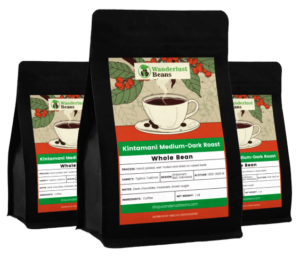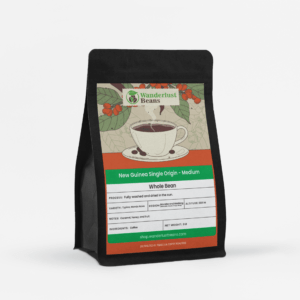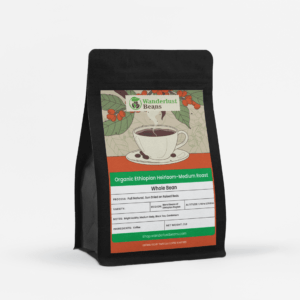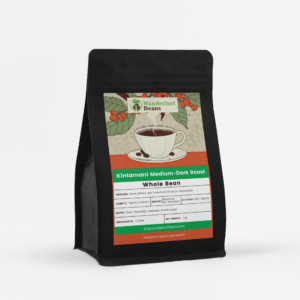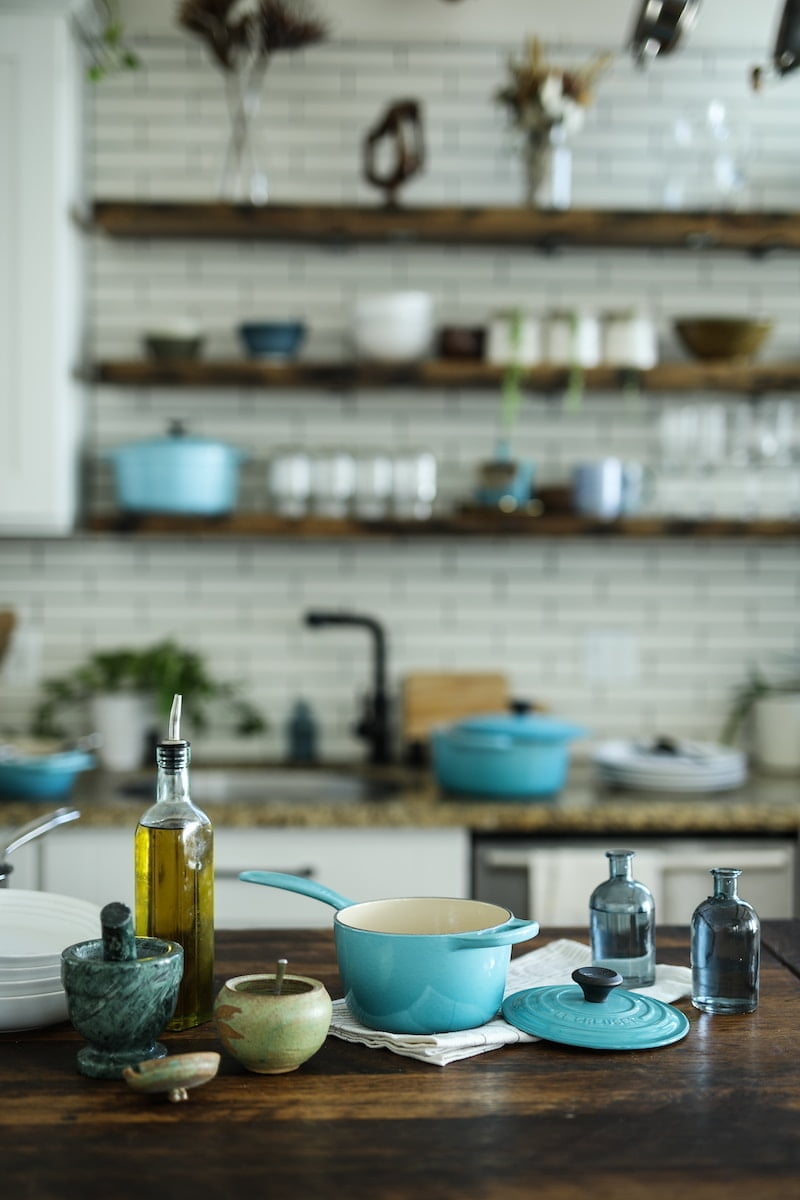Picture this: a vibrant coffee plantation nestled in a verdant valley, where the sun gently caresses the lush canopy and the air is filled with the intoxicating aroma of ripening coffee cherries. This isn’t just any coffee farm; it’s a beacon of sustainability, a testament to the power of conscious consumer choices and ethical farming practices. Welcome to the world of eco-friendly coffee, where each bean tells a story of resilience, respect for nature, and a commitment to a greener future.
As we delve into the enchanting saga of eco-friendly coffee, we’ll uncover the secrets behind its cultivation and the transformative impact it has on our planet. We’ll explore the heroes of this narrative – the organic farming practices, fair trade certifications, and innovative brands that are redefining the coffee industry. So, grab your favorite mug, sit back, and join us on this journey as we brew a sustainable future, one cup at a time.
The Awakening: Unveiling the Rise of Eco-Friendly Coffee
The tale of eco-friendly coffee begins with a whisper. A quiet murmur amidst the cacophony of mass-produced, conventional coffee that had long dominated the market. It was the voice of the environment, pleading for change, echoed by a handful of coffee farmers who dared to listen and act.
These pioneers understood that conventional farming practices were not only depleting the soil of its nutrients but also disrupting the delicate balance of our ecosystems. They recognized the pressing need for a shift towards more sustainable methods, thus sparking the rise of eco-friendly coffee.
The journey wasn’t easy. Transitioning from traditional to organic farming practices required time, patience, and a deep understanding of nature’s rhythms. But the farmers persevered, driven by their unwavering commitment to the environment and their communities.
And so, the seed of eco-friendly coffee was sown. Over time, this seed sprouted into a movement, gaining momentum as more and more consumers started to realize the power they wielded with each cup of coffee. As awareness spread, the demand for eco-friendly coffee grew, prompting more farmers to adopt sustainable practices and more brands to source ethically produced beans.
Today, eco-friendly coffee is no longer a whisper but a resounding call to action, echoing across the globe. It’s a testament to the power of conscious choices and a beacon of hope for a sustainable future. But what exactly makes coffee eco-friendly? Let’s delve deeper into the magic behind the green bean.
Nurturing Nature’s Bounty: What Makes Coffee Truly Eco-Friendly?
As we delve deeper into our exploration of eco-friendly coffee, it’s essential to understand the elements that make it so unique. These aren’t just any beans; they’re a testament to a harmonious relationship with nature, a symphony of sustainable practices that nurture both the land and its people.
The Symphony of Organic Farming Practices
At the heart of eco-friendly coffee is organic farming, a method that shuns synthetic fertilizers and pesticides in favor of natural alternatives. Picture this: a coffee plantation teeming with life, where birds chirp merrily in the shade trees and insects buzz about, playing their part in this intricate ecosystem. The soil is rich and fertile, nourished by organic compost and mulch.
Organic farming goes beyond just producing coffee beans. It’s about fostering biodiversity, improving soil health, and reducing pollution. It’s about creating a balanced ecosystem where every organism, from the smallest insect to the coffee farmer, thrives.
A Melody of Social Responsibility: Fair Trade Certification
Eco-friendly coffee doesn’t just care for the environment; it cares for the people too. Enter fair trade certification, a melody of social responsibility that ensures farmers receive a fair price for their beans. This certification empowers farmers, providing them with the financial stability they need to continue implementing sustainable farming practices.
But fair trade is more than just fair pay. It’s about investing in communities, providing farmers and their families access to education, healthcare, and improved living conditions. It’s about ensuring safe working conditions, promoting gender equality, and discouraging child labor. When you sip a cup of fair trade coffee, you’re not just tasting the rich flavors of the bean; you’re tasting the fruits of social justice.
Shade-Grown Coffee: A Harmonious Blend of Conservation and Flavor
Another key player in the eco-friendly coffee saga is shade-grown coffee. In contrast to conventional coffee plantations that often involve deforestation and monoculture, shade-grown coffee thrives under the canopy of diverse trees. This method mimics the natural habitat of coffee plants, providing them with the right amount of sunlight and protecting them from harsh weather conditions.
Shade-grown coffee plantations are a haven for wildlife, supporting a myriad of species, from birds to insects and mammals. They play a crucial role in preserving biodiversity and combating climate change by absorbing carbon dioxide. Plus, the trees provide additional income for farmers through timber and other crops grown alongside coffee.
But the benefits of shade-grown coffee aren’t just ecological; they’re flavorful too. The slower growth rate of coffee plants under the canopy results in beans with more complex and robust flavors. So, each sip of shade-grown coffee is a harmonious blend of conservation and flavor, a testament to the magic that happens when we work with nature, not against it.
In our next section, we’ll explore the transformative impact of your morning brew, revealing how each cup of eco-friendly coffee contributes to a greener world. But for now, let’s take a moment to appreciate the symphony of sustainable practices that make eco-friendly coffee truly enchanting.
next section expand as far as you can
Savoring the Magic: How Each Cup of Eco-Friendly Coffee Transforms the World
As we continue our journey through the enchanting world of eco-friendly coffee, it’s time to turn our attention to the transformative impact of your morning brew. Each sip of eco-friendly coffee is more than just a delightful experience for your taste buds; it’s a catalyst for change, a small yet significant step towards a greener world.
Reducing Carbon Footprint: A Dance of Sustainability
In the grand ballet of life on Earth, everything we do leaves a footprint. Conventional coffee farming, with its heavy reliance on synthetic fertilizers and pesticides, contributes significantly to greenhouse gas emissions. But when we choose eco-friendly coffee, we’re choosing to reduce our carbon footprint.
Organic farming practices sequester more carbon in the soil, helping mitigate climate change. Shade-grown coffee plantations, with their diverse trees, act as critical carbon sinks, absorbing CO2 from the atmosphere. By opting for eco-friendly coffee, we’re not just brewing a delicious cup of joe; we’re also brewing a more sustainable future.
Supporting Biodiversity: An Ecosystem in Every Sip
With each sip of eco-friendly coffee, we’re tasting the richness of biodiversity. Traditional monoculture coffee farms often lead to habitat loss, disrupting the delicate balance of ecosystems. In contrast, organic and shade-grown coffee farms foster biodiversity, providing a haven for a myriad of species.
Imagine this: a hummingbird flitting about in a shade-grown coffee plantation, pollinating flowers as it goes. A tree frog nestled in the leaves, keeping insect populations in check. A canopy of diverse trees, home to countless birds and mammals. This is the ecosystem you support with every cup of eco-friendly coffee – a testament to the magic of nature in harmony.
In the next section, we’ll guide you on a quest to choose your perfect brew and unveil the secrets of eco-friendly coffee labels. But for now, let’s revel in the transformative power of eco-friendly coffee. Each cup is a small yet significant step towards a greener world, a dance of sustainability that leaves a lighter footprint on our planet. So, as you savor the magic of your morning brew, remember: you’re not just drinking coffee; you’re partaking in a global movement towards a sustainable future.
next section expand as far as you can
Choosing Your Perfect Brew: A Quest for Eco-Friendly Coffee
As we embark on the next chapter of our eco-friendly coffee journey, it’s time to delve into the quest for the perfect brew. Choosing eco-friendly coffee isn’t just about selecting the beans with the most tantalizing aroma or robust flavor; it’s about deciphering labels, asking the right questions, and understanding what truly makes a coffee brand sustainable.
Decoding Labels and Certifications: A Map to Ethical Sourcing
In the realm of eco-friendly coffee, labels and certifications serve as guides, providing valuable insights into a brand’s commitment to sustainability. However, with numerous certifications gracing coffee packages, understanding what each one signifies can be a daunting task. Fear not, for we’re here to help you decode these labels.
- Organic Certification: This label ensures that the coffee was grown without synthetic fertilizers or pesticides, promoting healthier soils and ecosystems. It’s a testament to a brand’s commitment to sustainable farming practices.
- Fair Trade Certification: A fair trade label guarantees that farmers were paid a fair price for their beans, fostering economic sustainability and social justice.
- Rainforest Alliance/UTZ Certification: These certifications focus on biodiversity conservation and sustainable farming practices, ensuring that coffee production doesn’t harm natural resources or wildlife.
- Bird Friendly Certification: This label is given to shade-grown coffee farms that provide habitats for birds, promoting biodiversity.
By understanding these labels, you’re equipped with a map to ethical sourcing, enabling you to make informed decisions and support brands that align with your values.
Conversations with Coffee Suppliers: Unveiling their Sustainable Secrets
Choosing eco-friendly coffee isn’t just about decoding labels; it’s about engaging in conversations with coffee suppliers. Don’t hesitate to ask questions about their sourcing practices, environmental policies, and social initiatives.
How do they ensure their coffee is grown sustainably? Do they support the communities where their coffee is sourced? How do they minimize their environmental impact during roasting and packaging? These conversations offer valuable insights into a brand’s commitment to sustainability, helping you choose a brew that aligns with your values.
In our next section, we’ll introduce you to the pioneering brands that are leading the way in the eco-friendly coffee realm. But for now, let’s revel in the knowledge that choosing eco-friendly coffee is a powerful act. It’s a vote for a greener planet, a fairer economy, and a brighter future. So, as you embark on your quest for the perfect brew, remember: you’re not just choosing coffee; you’re choosing to make a difference.
Legends of the Eco-Friendly Coffee Realm: Pioneering Brands that Inspire
In the enchanting realm of eco-friendly coffee, there are visionary brands that lead the way, inspiring others to embrace sustainability and redefine the coffee industry. These legends are not just purveyors of exceptional coffee; they are champions of ethical sourcing, environmental stewardship, and community empowerment.

These pioneering brands understand that the journey of a coffee bean is as important as the destination. They meticulously trace their beans’ origins, ensuring transparency and accountability at every step. From working closely with farmers to employing environmentally friendly processing methods, they prioritize quality, sustainability, and social responsibility.
These brands forge partnerships with coffee farmers, offering fair prices and long-term contracts that provide stability and support. By fostering direct relationships, they empower farmers to invest in sustainable practices, improve their livelihoods, and create thriving communities.
Throughout the production process, these brands strive to minimize their environmental impact. They employ energy-efficient roasting techniques, utilize eco-friendly packaging materials, and implement waste management strategies that prioritize recycling and composting. Their commitment to sustainability extends beyond the cup, leaving a positive footprint on the planet.
Tales of Innovation: How Visionary Brands Lead the Way
In the realm of eco-friendly coffee, innovation is key. These visionary brands constantly push boundaries, seeking new ways to make a difference. They invest in research and development, exploring cutting-edge technologies and sustainable farming practices that enhance both the coffee quality and the environmental impact.
Some brands pioneer regenerative agriculture, a holistic approach that goes beyond organic farming, aiming to restore ecosystems and build soil health. Others experiment with carbon-neutral or carbon-negative practices, offsetting their emissions and actively contributing to the fight against climate change. These innovations inspire others and pave the way for a more sustainable future.
But it’s not just their commitment to sustainability that sets these brands apart; it’s also their dedication to exceptional coffee. They understand that eco-friendly coffee should not compromise on taste or quality. Through meticulous sourcing, expert blending, and precise roasting techniques, they create coffees that delight the senses while embodying the values of sustainability.
In our final section, we’ll uncover the secrets of brewing an eco-friendly coffee routine at home, from choosing the right brewing methods to responsibly managing coffee waste. But for now, let’s celebrate the legends of the eco-friendly coffee realm, the brands that inspire us to embrace sustainability, one
Brewing Magic at Home: Enchanting Rituals for an Eco-Friendly Coffee Experience
Our journey through the enchanting world of eco-friendly coffee would not be complete without exploring how to create an eco-friendly coffee routine right in the comfort of your own home. By embracing sustainable brewing methods and responsibly managing coffee waste, you can further contribute to a greener world with every cup you brew.
Unveiling the Secrets of Eco-Friendly Brewing Methods
- Pour-over Brewing: This method allows for precise control over the brewing process, reducing waste by brewing only what you need. Use a reusable metal or cloth filter instead of disposable paper filters to minimize waste.
- French Press: The French press is a classic method that requires no filter, eliminating the need for paper filters. Additionally, it allows for a full immersion brewing process, resulting in a bold and flavorful cup of coffee.
- Aeropress: The Aeropress combines immersion and pressure to extract a rich and clean cup of coffee. It requires less coffee and water compared to other methods, making it more efficient and environmentally friendly.
- Cold brew: Cold brew coffee is made by steeping coffee grounds in cold water overnight. The result is a smooth and refreshing brew that requires no heat during the extraction process, saving energy.
Choose the brewing method that resonates with you and experiment with different techniques to create your perfect cup of eco-friendly coffee.
Embracing the Circle of Life: Recycling and Composting Coffee Waste
Coffee waste doesn’t have to end up in the trash bin. Instead, consider these eco-friendly practices to give your coffee waste new life:
- Composting: Coffee grounds, along with filters made from natural materials, can be composted and returned to the earth as nutrient-rich soil. They make an excellent addition to your compost pile or worm bin.
- Gardening: Coffee grounds can be used in your garden as a natural fertilizer. Rich in nitrogen, they contribute to soil health and can help with plant growth and pest control.
- DIY Beauty Products: Coffee grounds can be repurposed as a gentle exfoliator for your skin or used as a natural dye for hair. Get creative and find new ways to incorporate coffee grounds into your self-care routines.
By recycling and repurposing coffee waste, you maximize its potential and minimize its impact on the environment.
As our enchanting journey through the world of eco-friendly coffee comes to a close, let’s relish in the knowledge that we have the power to make a difference. By choosing sustainable brewing methods and responsibly managing coffee waste, we align our daily rituals with our commitment to a greener future.
In this finale, we celebrate the magic of eco-friendly coffee – the harmonious blend of flavor, sustainability, and social responsibility. So, as you prepare to brew your next cup, remember the legends that inspire us, the transformative impact of each sip, and the wonders that unfold when we choose to embrace eco-friendly coffee. Cheers to a sustainable coffee experience!
Conclusion
Embracing the Enchantment of Eco-Friendly Coffee As we reach the end of our journey through the enchanting world of eco-friendly coffee, we are filled with a sense of wonder and hope. We have witnessed the rise of sustainability, the magic behind organic farming practices, and the transformative power of each cup of eco-friendly coffee. We have explored the legends that inspire us and the innovative brands that lead the way towards a greener future. But our adventure doesn’t end here. It continues through the choices we make and the actions we take as coffee lovers and responsible consumers. Embracing eco-friendly coffee is not just a trend or a passing fad; it’s a conscious decision to prioritize the planet and the well-being of coffee farmers and their communities.

